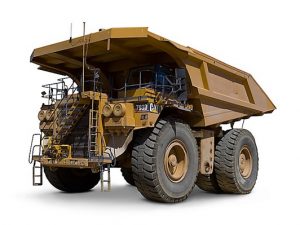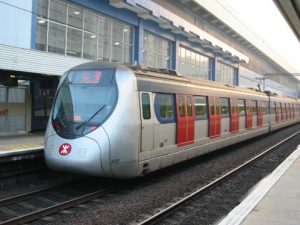Our research
C-MORE's research area is centred around evidence-based asset management, and takes many forms. Our broad topic areas include condition-based maintenance, asset management, and machine learning approaches for reliability and maintenance.
Condition-based maintenance projects
Condition-based maintenance (CBM) problems combine the age of an asset along with measurement information collected to make optimal decisions on equipment replacement. Good candidates for CBM are medium-sized fleets (10 or more) of large assets with major components that undergo renewal or replacement.

Gold mining haul truck engine replacement problem
In this project, 15 haul truck engine histories were collected over 6 years. There were 8 failures recorded and 13 preventive engine replacements. Using the historical data in concert with oil analysis results, it was determined that measurements of silicon and molybdenum were statistically significant predictors of engine health.
With an estimated preventive replacement cost of $380,000 and an average failure replacement cost of $925,000, the optimal age-based policy was found to be around 18,800 operating hours, whereas the current policy appears to be around 16,000 hours. By simply increasing the cycle length between preventive replacements, a savings of 12.5% could be made, from $44.2/hour to $38.6/hour.
With the use of the condition-based policy, a savings of 15% could be made. By retroactively applying the CBM model to historical records, 3 out of the 8 failures would have been saved, and 11 out of 13 preventive maintenance replacements would have operated additional hours prior to removal.
A simple condition-monitoring solution with big results
Honk Kong's Mass Transit Railway was suffering unacceptably high failures in the traction motor ball bearings, and intended to address the problem by implementing a condition-based maintenance program.
An analysis of the readily available condition monitoring data determined that there was a statistically significant link between the colour of the bearing grease colour and the health of the ball bearings. By initiating preventive maintenance based on the colour of the grease colour, the annual failure rate of ball bearings reduced from 9 per year to 2, resulting in a reduction in total costs by 55%.

Asset management projects
The projects in this section pertain to strategies for asset management. These problems include capital asset replacement decisions, spares management decisions, and other problems related to maintenance and asset management. A broad range of problems can fall under this umbrella.
Coal mining company haul truck life cycle cost analysis
At a coal mining company, their fleet of haul trucks were being replaced at a schedule of 13 years. However, due to aging, the trucks required increasing maintenance over time, resulting in decreasing availability for operations. Each truck had a purchase price of 5M USD, and a retiring salvage value of $200,000. By analysis of value of capital assets over time, the recommended replacement period was 8 years. As a result of the increased value at salvage, a savings of $1M per truck could be realized.

A business case for storing critical spare parts
When considering extremely long lasting parts that play a critical role in your infrastructure, there may not be a clear answer as to whether storing spare units is prudent.
By analysing the potential downside of a 22 week lead time to replace a fume fan shaft, we found that the expected revenue loss far outweighed the capital investment and holding costs of a single spare part. Thus, a business case was made to keep one spare part in stock, reducing the risk of incurring a loss of $132M over the 22 week downtime.
Machine learning projects
Machine learning (ML) is an approach to solving problems where the relationship between the inputs and the outputs are not defined by the user, but discovered by the computer program. It is very powerful because it enables the discovery of hidden patterns in our data that were previously unknown.
In the context of maintenance and asset management, applications of ML may include fleet management strategies, maintenance and sensor data analytics, and more.
Degradation modelling with Bayesian neural networks
When monitoring the health of an asset, some equipment fall under the category of those subject to gradual degradation. That is, rather than a binary operational/failed mode, the equipment gradually loses its functionality over time, and whether it is still operational must be determined by the user. Scenarios such as batteries losing its maximum charge over time, gradual wear of a bearing, or crack propagation are examples of gradual degradation.
In cases such as these, it is beneficial to be able predict when the degradation will cross the pre-set threshold. By combining an auto-encoder, a special type of deep neural network, with the traditional Wiener process-based degradation model to predict the degradation process trajectory and variability, the remaining useful life (RUL) of equipment can be more accurately predicted. This approach was tested on degradation history of 100 turbofan
engines from NASA. C-MORE’s approach of combining the two methods was found to most closely estimate the remaining useful life.

Local transit light rail track anomaly detection problem
This project arose from hours of infrared video being collected by a local transit company as a consequence of a previous rail failure. This type of rail failure was preemptively identifiable by hot-spots in the rail. By attaching an infrared camera to one of the trains, many hours of condition monitoring data was collected in the form of video.
In order to identify any problems, the task of reviewing the video remained. Rather than leaving it for human review, a machine learning algorithm was applied to the images to identify those that contained anomalies. A combination of Microsoft Visual Object Tagging Tool and TensorFlow Object Detection API were used to develop and train the algorithm.


